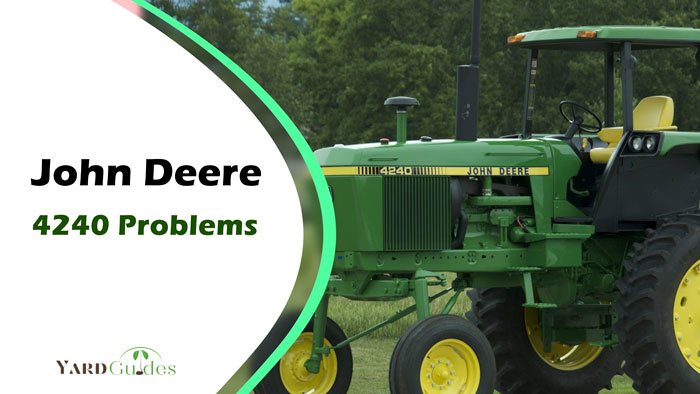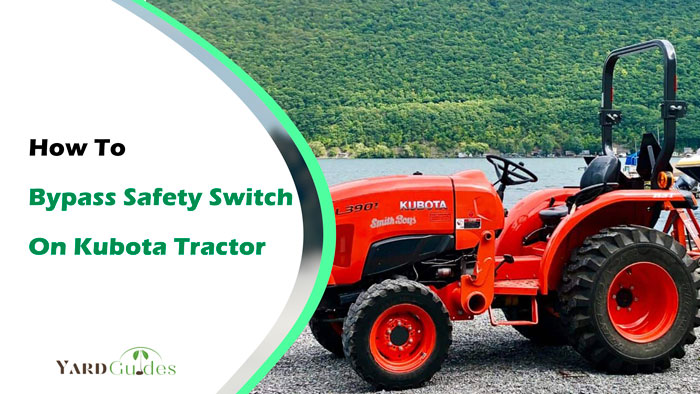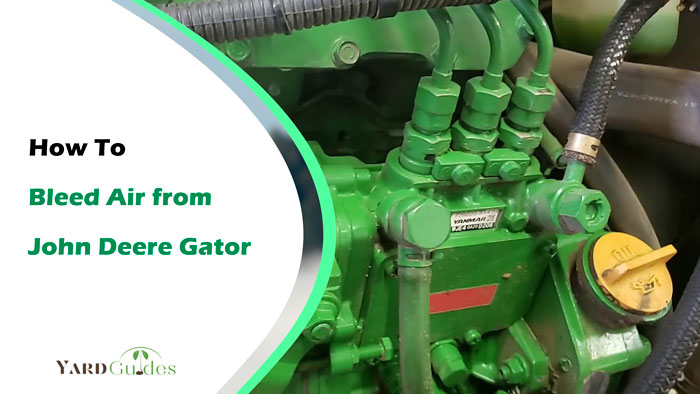John Deere has always been the top choice when it comes to tractors. Yet, they also have problems just like others. Well, if you own a John Deere 4240, you certainly have come across these problems and the reason why you are here.
So what are the most common John Deere 4240 problems? High diesel oil consumption, engine stalling, hydraulic system overheating, and the engine not starting are the common issues associated with this tractor. Additionally, you may also come across a problem where the wheels don’t follow your orders and drift left-right automatically.
Certainly, these problems can be quite annoying and you need to fix those as soon as you can. So without any further ado, let’s see how you can fix those.
Table: Problems And Solutions
Before we dig in deep with the problems and solutions, let’s see a table first. This will help you get a grasp of what we are going to cover in-depth.
| Problems | Solution |
| High diesel oil consumption | Replace engine seals |
| Use the recommended viscosity oil | |
| Engine stalling | Replace fuel filter |
| Bleed the fuel pipe | |
| Pre-heat the engine | |
| Hydraulic system overheating | Bleed the hydraulic cylinder valve |
| Keep the hydraulic pressure level as recommended | |
| Engine not starting | Change the tire pressure to the manufacturer’s recommendation |
| Replace battery | |
| Wheels drifting left-right | Change the tire pressure to manufacturer’s recommendation |
| Align the wheels |
John Deere 4240 Problems And Solution
At first, we will cover the problems so that you can relate to them. After that, we will provide you with possible fixes.
1. High Diesel Oil Consumption
You just know when your John Deere engine needs more oil than ever to run. You will come across filling oil more frequently than ever. Well, this isn’t how this is supposed to be. The problem here is not due to the engine but unwanted leaks.
There are two reasons for this issue. One is that there’s a leak in the seals around the engine. The other one is that you are using the wrong viscosity of the oil.
Solution
- Initially, make sure the seals around the engine are leak-free. The most common symptom is that you will find oil on the ground right beneath the engine. If you find some, simply replace the seals.
- And using the right viscosity is quite important for the engine to convert that oil efficiently. The manufacturer recommends a viscosity of 46/100.
2. Engine Stalling
Your John Deere engine is stalling when it stops responding to your instructions and shuts off in the middle of your ride. This problem can occur due to 3 reasons. Dirty fuel filters, contaminated fuel pipes, and the engine not pre-heated before a ride. So let’s see how you can solve them.
Solution
- Firstly, you don’t want a dirty fuel filter. Simply taking it out and cleaning it won’t do the job. You need to replace the entire filter.
- Moreover, when air enters the fuel pipe, it’s considered to be contaminated as it can’t function properly. For this, you need to bleed the fuel pipe so that it gets rid of all the air. Here’s a video that will help you with the bleeding process;
- Lastly, it’s crucial to pre-heat the engine before taking your 4240 for a spin. Thus, start the engine and keep it running for a couple of minutes before taking it out.
3. Hydraulic System Overheating
The air enters the hydraulic system and messes around the hydraulic fluid resulting in an overheating issue. It occurs when the input power is significantly greater than the output. As a result of inadequate efficiency, the rest of the power needs to be dissipated as heat.
Additionally, improper hydraulic pressure always plays a significant role here. If there is a big difference in the pressure level, it will result in overheating.
Solution
Here, you have to get rid of the extra air that enters your tractor’s hydraulic system. To do that, simply open the bleed valve that is present at the surface of the hydraulic cylinder. Don’t close it till all the air is out and see that all the fluid is moving smoothly.
Similarly, you also have to keep the pressure level as recommended. You should stay between the range of 580 PSI to 2900 PSI upon demand.
4. Engine Not Starting
It’s because the starter motor is not getting sufficient energy. A bad battery is to blame here as the starter motor gets its energy from here.
The starter motor needs electricity to get itself started. Whereas, a bad battery will be inefficient to do so.
Solution
- Firstly, check whether the battery has sufficient charge or not. This is often overlooked by users. If it’s charged, there are two possibilities that it leads to. One is that the battery needs a replacement and the other one is replacing the starting motor.
- If you are not sure, we recommend changing the starting motor first as it’s less expensive than a battery.
5. Wheels Drifting Left-Right
Tractor wheels tend to drift left and right when the tire pressure is inadequate. You will feel like the tractor is no longer in your control and drifting in different directions.
Additionally, the alignment of the wheels is also crucial here. These two factors make your wheels cope with your steering. Therefore, if not perfect, the movement won’t be perfect either.
Solution
It’s important to keep the tire pressure as per the manufacturer’s recommendation to get flawless steering. The tire pressure rating should be around 12 PSI. So don’t wait anymore and hop on with a tire inflator to take the pressure up to 12 PSI.
When it comes to aligning the wheels, it’s best to take them to a mechanic. Nevertheless, if you want to do it yourself, here’s a video demonstrating how to do that.
Conclusion
We hope your John Deere 4240 problems were covered in our article. These are the ones that are frequently faced by 4240 users and the solution isn’t that hard either. As you can see, the pressure level plays a crucial role in tires as well as in hydraulic systems.
Therefore, it’s best if you follow the manufacturer-recommended values. On the other hand, it’s equally vital to ensure no air gets into your tractor’s system.



